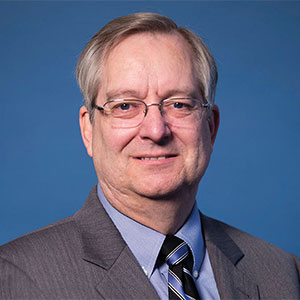
We interviewed Jon Krohmer, MD, a board-certified emergency and EMS physician, who has 47 years experience in EMS and public policy. He is the former director of NHTSA’s Office of Emergency Medical Services (OEMS) and served as an EMS medical director in Michigan and Maryland. Dr. Krohmer was also president of the National Association of EMS Physicians and spent a decade with the U.S. Department of Homeland Security.
Q: Reflecting on the 50th anniversary of EMS Week, what are some of the biggest changes you've noticed in EMS over the decades?
A: In the past 50 years, there’s been an evolution in EMS–in clinical care, in technology and in our educational capabilities. Technological advancements have allowed us to expand our scope of clinical care. In EMS education, we’ve gone from very scripted education–with some simple mannequins and PowerPoint slides–to innovative, interactive educational programs and simulations.
Another significant change is that today’s EMS clinicians are typically more engaged with their patients and with patients’ families than in the past.
Q: What were some of the big challenges of the past?
A: In the very early days of EMS, we had very good governmental backing in terms of programmatic and financial support. In 1980 with the Omnibus Budget Reconciliation Act, dedicated EMS funding was shifted to state preventative health block grants, and financial support of EMS became a big challenge.
Acceptance of EMS in the healthcare community has been another big challenge. Today, we view EMS as a central part of the healthcare system, but early on that was not the case. There was a very distinct separation between EMS and emergency department care as well as the rest of healthcare.
Another challenge has been EMS in rural environments. There’s been a lot of struggles building EMS systems in rural communities. It’s something that still remains a challenge, but it has improved in recent years and continues to be a priority.
Q: What are some of the current challenges?
A: Financial support of EMS continues to be a challenge. In recent years, EMS has found that it can fill voids in other parts of the healthcare system, which has led to the creation of community paramedicine and mobile integrated healthcare. We have a challenge right now in that we need to educate a lot of folks in public health and community healthcare that EMS can work with them in helping to take care of their patients.
EMS has some organizational challenges in that we are represented by disparate communities–private sector EMS, fire-service EMS, volunteer EMS. We need to come together and work on our challenges as a group.
Q: What advice do you have for new clinicians?
A: I think EMS is a fabulous component of healthcare and public health. It’s a critical and much needed service, but it’s much more than treating life-threatening emergencies. Lights and sirens and saving lives does not necessarily happen every day with EMS clinicians, but EMS is there to make sure that folks have access to healthcare when they need it.
We need to improve career satisfaction and career ladders for clinicians, and support them better financially. Many groups are working on increased reimbursement for EMS care, which will then result in better salaries for EMS clinicians.
Q: What can new clinicians learn from veterans of EMS?
A: Younger clinicians need more real-world experience and need to learn how to engage with patients and patients’ families. They can learn how to be a better clinician and function more effectively in the field by working with more experienced clinicians.
Veteran EMS clinicians should view themselves as mentors for new folks coming in. They can teach them how to apply their knowledge and skills to take care of their patients as people. In an emergency, the patient is going through a stressful time, but the patient’s family is also going through a stressful time. For example, when EMS transports a patient to the emergency department, they can take a couple minutes to focus on the patient’s family and what they need. New EMS clinicians need to learn how to feel comfortable with various situations, and they can lean on folks who have been in the field longer.
Q: What can visitors expect to see at EMS Day at the Museum?
A: I’m really excited about that! The museum will be putting out artifacts from their exhibits including equipment from the television show Emergency! We’ll have current DC and Fire ambulances on display, as well as three vintage ambulances, used in the 1970s and early 80s. There’s a distinct difference between the older vehicles and new vehicles–as well as the clinical care that can be provided in the vehicles. The panel discussion will talk about the very early history of EMS and we’ll go through the evolution of EMS, including insight from John Moon, who was a paramedic with Freedom House Ambulance Service, the all-African-American team of paramedics who served some of the most disadvantaged areas in Pittsburgh in the 60s and 70s.
